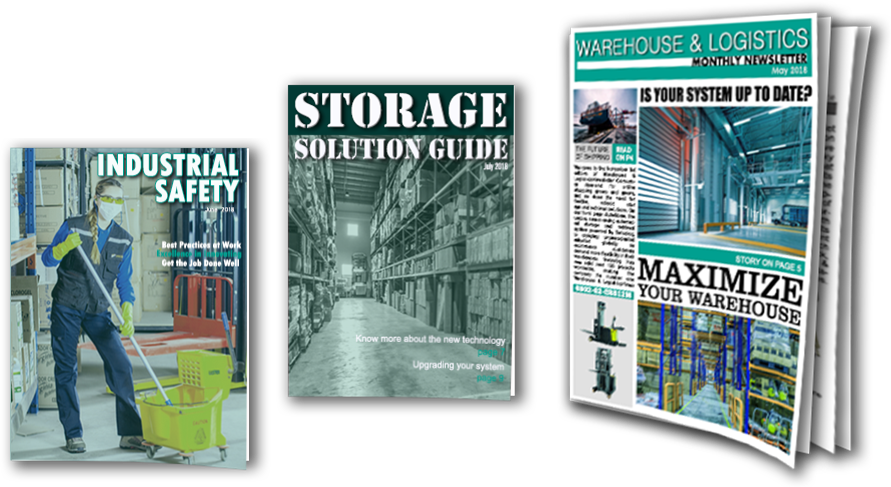Online purchasing has been one of the most popular growing consumer behaviors in the last decade and it was reported in 2014 that companies are expecting to see 40% growth in average online sales in the next 5 years. The increased growth in online activity has distribution centers at the forefront, with many holding centers and warehouses facing important decisions about their businesses and how they will keep up with the growing demand.
It’s no surprise that ecommerce is altering the way the traditional warehouse works, and these companies must now face the possibility that their approaches to distribution may or may not be up to snuff with the current and future demand set to come. If you’re curious about how online purchasing is shifting our distribution centers, consider the information below on how ecommerce is changing warehouse trends.
Warehouse Expansion
Many distribution centers are facing the necessity of expanding, in order to support the growing need for larger inventory. Some facilities are in the midst of expanding the footprint of their current warehouses in order to support the growth, while others are considering investing in bulk and cross-docking facilities. These kinds of approaches are often utilized by warehouse companies who have no room for physical expansion, but who want to both remain in their current location and keep up with growing demand.
These kinds of changes can be very successful for some warehouses; however, cross-docking and expanding calls for a system that can keep these different approaches organized. Intelligent labeling for warehouses will be key to expansion efforts, not only to keep the larger inventory ordered but to also keep production flowing. This is especially true for warehouses that adopt cross-docking, as employees both on the ground and transporting will need labels to know which items need storage time, which items need faster transportation, etc.
Fulfillment Adaptability
In terms of warehousing, fulfillment adaptability is referred to as the warehouses ability to handle a large range of order profiles efficiently and effectively. Over the last few years, ecommerce has had a part in changing the priorities of warehouses, specifically from fulfillment throughput to fulfillment adaptability.
Essentially, it’s more important now for warehouses to be flexible and adaptable to current trends and needs than it is for them to focus on moving the highest amount of inventory from one place to another.
While both aspects are still very important to warehouse success, adaptability has become a key trend, with ecommerce being most responsible for this change. The increase in direct-to-consumer shipments requires much greater responsiveness, due to the consumer’s new ability to alter orders and expectations at the click of a button. Ecommerce has made it easier for consumers to make these quick changes at any moment, and a warehouse’s ability to be adaptable to these changes is critical to keeping loyal consumers.
Warehouse Re-location
For many distribution companies, the ability to keep up with consumer demand can no longer be met by their current location and size. One of the most prevalent characteristics of ecommerce is that companies are now able to offer their items and services much more quickly, within hours if possible.
For warehouses, this means being able to provide fast turnaround and accessibility to the consumers. Re-locating also means re-evaluating labeling systems and adopting new SKU’s that will more efficiently organize items that are most popular, items that need to go out the fastest, etc.
While many companies might be able to remain in their current location, newer facilities are preferred that offer more convenient storage, a closer location to large cities, higher ceilings for stacking, etc. Older facilities simply aren’t built for some of the current inventory goals.
Package Expectations
One of the more recent trends in ecommerce has been the growing need for an amazing experience for consumers from the moment they order to the moment their product is in their hands. The previous mindset valued an easy purchasing experience; however, ecommerce has quickly made it that the receiving of a product is just as valuable.
Companies are now focused on the process between the initial purchase and having a perfect parcel delivered to a consumer, with an added importance on the quality, effective packaging and overall attractiveness of parcels. It is the experience of consumer’s receiving their items that is valued in today’s online deliveries, and warehouses have had to be mindful of these new trends.
This means having inventory kept protected and properly stored in distribution centers, as well as ensuring that effective labeling is not altered or damaged in any way during storage. Warehouses have had to be prepared to store very particular types of packaging, unique shapes, storing specifics, etc. in order to please both the specific business as well as their receiving consumers.
Labeling specificities about packages is vital to informing workers about the storing and handling of various packages, as well as recognizing the current trends of monthly subscription packages. These packages are sent out monthly to consumers and should be labeled accordingly.
The productivity of warehouses has changed quickly in the last decade, as ecommerce has transformed the process of storing, packaging and assembly in many ways. Current trends in warehousing as a result of ecommerce have required larger storage facilities, greater adaptability to consumer needs and a greater awareness of quality packaging and protection. It is likely that the ease of ecommerce will continue to be a prime tool for consumers, so it’s important for warehouses to ensure that their organization, labeling systems and attention to detail are extremely efficient to keep up with the current trends.


